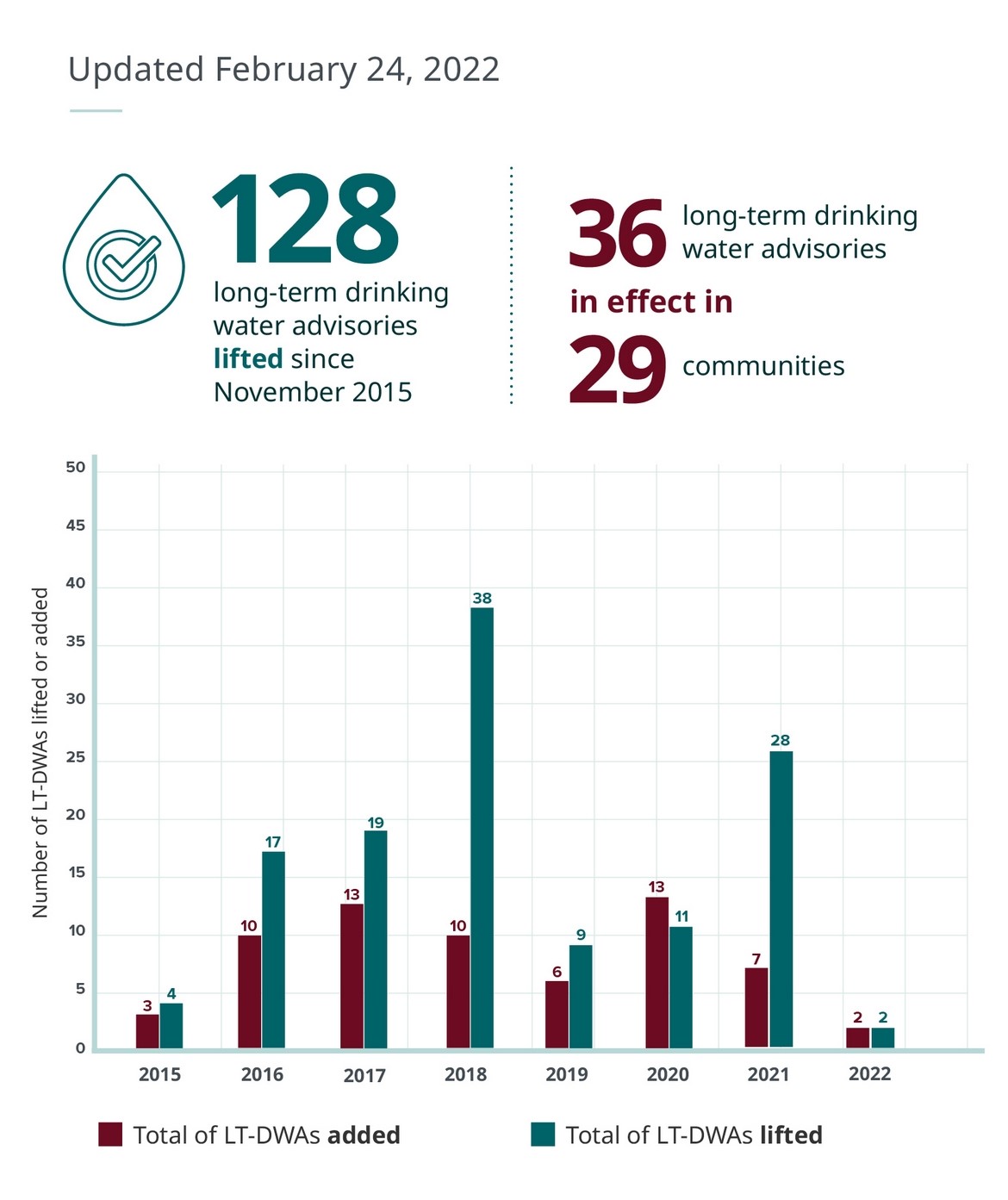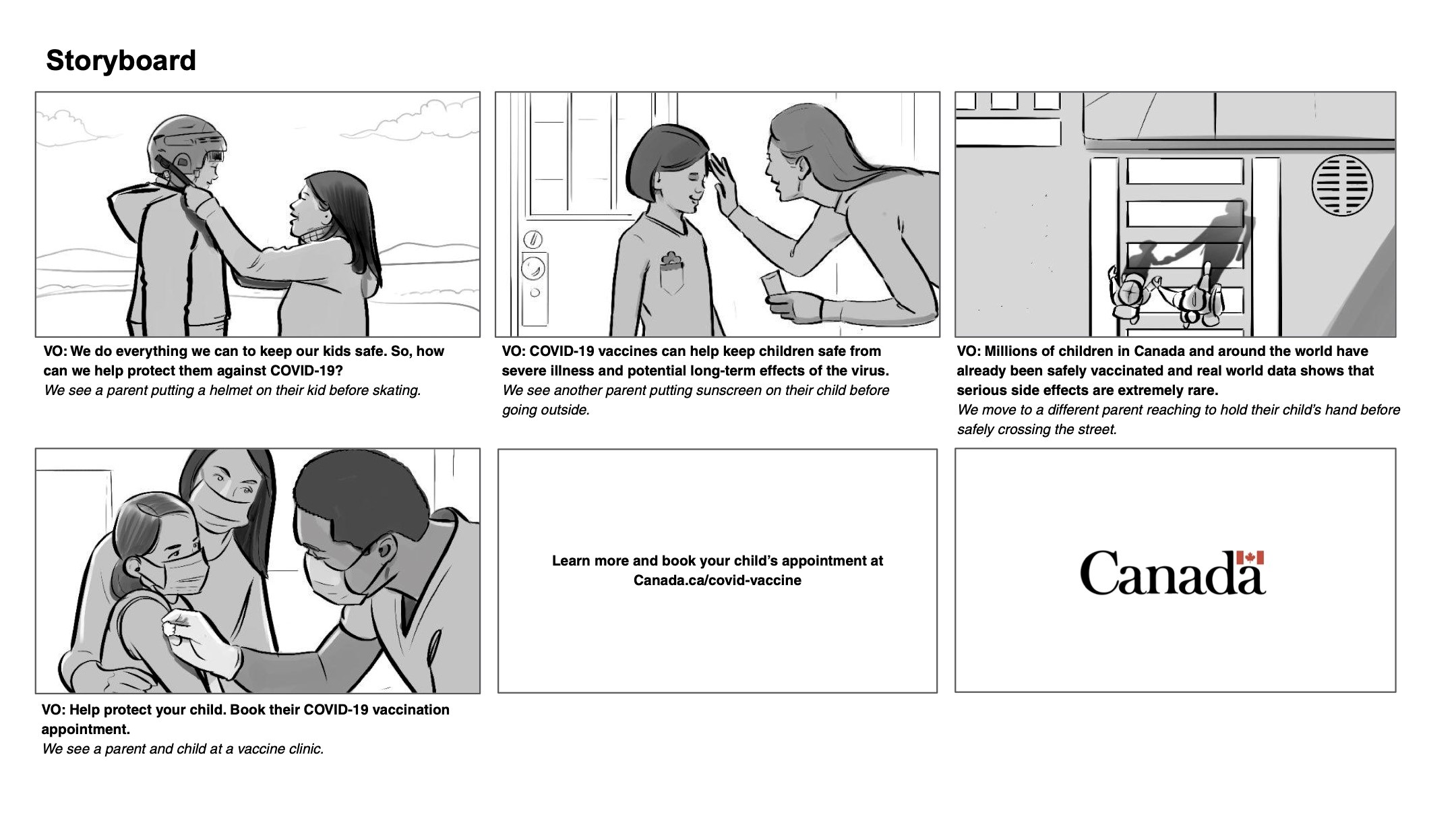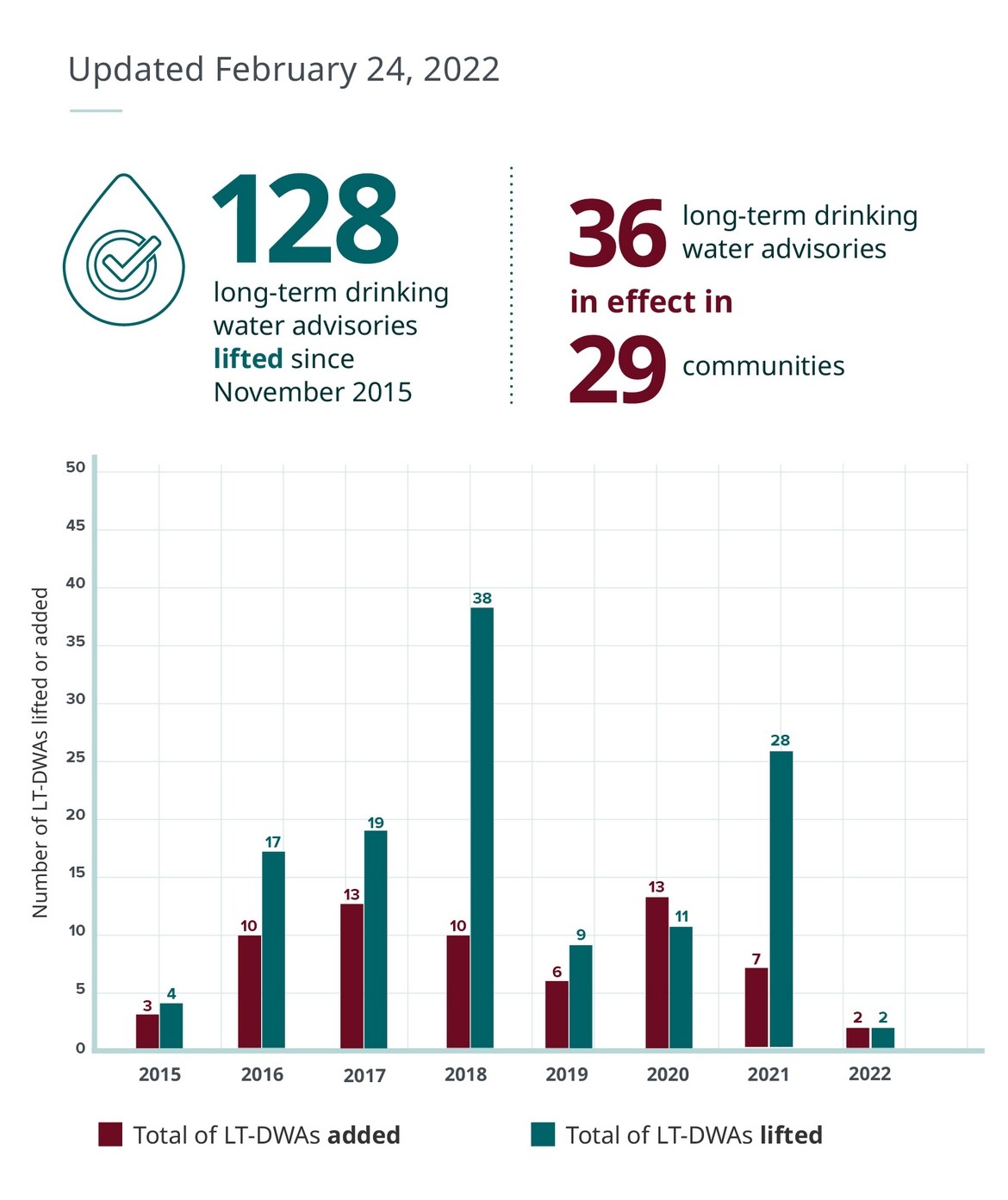



Target audience:
| LOCATION | GROUP | LANGUAGE | DATE | TIME (EST) | GROUP COMPOSITION | NUMBER OF PARTICIPANTS |
|---|---|---|---|---|---|---|
| Durham Region – Ontario | 1 | English | Feb. 2 | 6:00-8:00 pm | Parents of Children under 12 | 7 |
| Bas-Saint-Laurent / Gaspésie / Côte-Nord regions – Quebec | 2 | French | Feb. 3 | 6:00-8:00 pm | General Population | 6 |
| Mid-size Centres Saskatchewan | 3 | English | Feb. 8 | 7:00-9:00 pm | Parents of Children under 12 | 7 |
| Okanagan Region – British Columbia | 4 | English | Feb. 9 | 9:00-11:00 pm | Renters | 8 |
| Nunavut | 5 | English | Feb. 10 | 6:00-8:00 pm | General Population | 8 |
| Hamilton & Niagara Region – Ontario | 6 | English | Feb. 15 | 6:00-8:00 pm | Post-Secondary Students | 7 |
| Edmonton | 7 | English | Feb. 16 | 8:00-10:00 pm | Tested Positive for COVID-19 | 7 |
| Winnipeg | 8 | English | Feb. 17 | 7:00-9:00 pm | General Population | 8 |
| Prince Edward Island | 9 | English | Feb. 22 | 5:00-7:00 pm | General Population | 7 |
| Sudbury Region – Ontario | 10 | French | Feb. 23 | 6:00-8:00 pm | Francophones | 8 |
| Central/Southern Quebec | 11 | French | Feb. 24 | 6:00-8:00 pm | General Population | 6 |
| Saskatchewan & Manitoba | 12 | English | Feb. 28 | 8:00-10:00 pm | Indigenous Peoples Living on Reserve | 5 |
| Total number of participants | 84 | |||||
These ten groups were asked about the ‘convoy’ protests, which grew in size and scope throughout much of the month of February. In the groups held earlier in the month, participants were first asked if they had heard anything about the Government of Canada recently removing the exemption from federal border entry requirements for certain categories of travellers, including truck drivers. Few said they had. After it was clarified that, as of January 15th, 2022, unvaccinated Canadian truck drivers entering Canada would need to meet requirements for pre-entry, arrival, day-8 testing, and quarantines, several participants recalled having heard something about this development and its connection to the protests. While some had heard that unvaccinated truck drivers would now be limited to only domestic routes, a number of others were also concerned about potential supply chain issues resulting from these regulations. In the group from the Okanagan, supply-related issues were of particular concern, with some participants recalling suffering through similar difficulties in the aftermath of the extreme flooding in the province in November of 2021. A small number of participants expressed the opinion that the potential impact of this issue had been greatly exaggerated, being of the impression that the vast majority of truck drivers were fully-vaccinated and thus would not have been impacted by the removal of this exemption.
Among those who had not yet received their booster, the primary driver behind this decision was a lack of confidence in the efficacy of the vaccine and whether it would have a tangible impact on preventing them from contracting or spreading COVID-19. A number of participants clarified that while they had gotten their initial vaccines, the massive increase of transmissibility and positive cases among both vaccinated and unvaccinated individuals during the recent Omicron wave had limited their desire for a third dose, believing it would have little effect. A few also mentioned experiencing a general fatigue related to the pandemic as a whole, expressing that they no longer wished to participate in most public health measures, including receiving any additional doses of the COVID-19 vaccine.

Above is a storyboard featuring six animated frames from a Public Health Ad Campaign. The first frame shows a simple line drawing of a mother and father holding up their child with their arms. The voiceover reads, “We all want to protect our children. So how does COVID-19 vaccination fit into that?” The second frame then shows the child starting to run as if they’re playing, with the voiceover saying, “COVID-19 vaccines can help keep kids safe from severe illness and potential long-term effects if they get the virus.” The third frame shows the line transform into an outline of a five year old playing with his father and an eleven year old hugging her mother. The voiceover says, “Doses for children 5 to 11 are smaller, which is all they need for good protection.” The next frame shows more kids appear, and they all start walking together. The voiceover reads, “Millions of children in Canada and around the world have already been safely vaccinated and severe reactions are very rare.” The fifth frame then shows one child holding hands with their parents, and the line then turns into the vaccine icon. The voiceover says, “Vaccination can help protect your child from getting seriously sick from COVID-19.”

Above is a storyboard featuring six animated frames from a Public Health Ad Campaign. The storyboard begins with an image of a parent putting a helmet on their child’s head before skating. The voiceover says, “We do everything we can to keep our kids safe. So, how can we help protect them against COVID-19?” The second frame transitions to another parent putting sunscreen on their child’s face before going outside, with the voiceover reading, “COVID-19 vaccines can help keep children safe from severe illness and potential long-term effects of the virus.” The third frame moves to another scene where a parent reaches to hold their child’s hand before safely crossing the street. In this frame, the voiceover says, “Millions of children in Canada and around the world have already been safely vaccinated and real world data shows that serious side effects are extremely rare.” The fourth frame then shows a parent and a child at a vaccine clinic, with the voiceover finishing with, “Help protect your child. Book their COVID-19 vaccination appointment.” The fifth frame, with no voiceover, is a white screen with bold, black text that reads, “Learn more and book your child’s appointment at Canada.ca/covid-vaccine”. The storyboard finishes with the Government of Canada logo on a white screen.

| GROUP | DATE | TIME (EST) | TIME (LOCAL) | LOCATION | COMPOSITION | MODERATOR |
|---|---|---|---|---|---|---|
| 1 | Wed., February 2nd | 6:00-8:00 | 6:00-8:00 (EST) | Durham Region – Ontario | Parents of Children Under 12 | DN |
| 3 | Tues., February 8th | 7:00-9:00 | 6:00-8:00 (CST) | Mid-size Centres Saskatchewan | Parents of Children Under 12 | DN |
| 4 | Wed., February 9th | 9:00-11:00 | 6:00-8:00 (PST) | Okanagan Region – British Columbia | Renters | DN |
| 5 | Thurs., February 10th | 6:00-8:00 | 6:00-8:00 (EST) | Nunavut | General Population | TBW |
| 6 | Tues., February 15th | 6:00-8:00 | 6:00-8:00 (EST) | Hamilton & Niagara Region – Ontario | Post-Secondary Students | TBW |
| 7 | Wed., February 16th | 8:00-10:00 | 6:00-8:00 (MST) | Edmonton | Tested Positive for COVID-19 | DN |
| 8 | Thurs., February 17th | 7:00-9:00 | 6:00-8:00 (CST) | Winnipeg | General Population | TBW |
| 9 | Tues., February 22nd | 5:00-7:00 | 6:00-8:00 (AST) | Prince Edward Island | General Population | DN |
| 12 | Mon., February 28th | 8:00-10:00 | 7:00-9:00 (CST) | Saskatchewan & Manitoba | Indigenous Peoples Living on Reserve | TBW |
| LOCATION | CITIES | |
|---|---|---|
| Durham Region – Ontario | Cities could include (but are not limited to): Oshawa, Whitby, Ajax, municipality of Clarington, Pickering, township of Scugog, township of Uxbridge, township of Brock.
NO MORE THAN TWO PER CITY. ENSURE A GOOD MIX OF CITIES ACROSS THE REGION. INCLUDE THOSE RESIDING IN LARGER AND SMALLER COMMUNITIES. |
CONTINUE - GROUP 1 |
| Mid-size Centres Saskatchewan | Cities could include: Prince Albert, Moose Jaw, Lloydminster, Swift Current, Yorkton. NO MORE THAN TWO PER CITY. ENSURE A GOOD MIX OF CITIES ACROSS THE REGION. |
CONTINUE - GROUP 3 |
| Okanagan Region – British Columbia | Cities include: Kelowna, Vernon, Penticton, Lake Country, Summerland, Coldstream, Peachland, Armstrong, Spallumcheen, Osoyoos. NO MORE THAN TWO PER CITY. ENSURE A GOOD MIX OF CITIES ACROSS THE REGION. INCLUDE THOSE RESIDING IN LARGER AND SMALLER COMMUNITIES. |
CONTINUE - GROUP 4 |
| Nunavut | Cities could include (but are not limited to): Iqaluit, Arviat, Rankin Inlet, Baker Lake. AIM FOR NO MORE THAN 4 FROM IQALUIT. AIM FOR A GOOD MIX OF CITIES ACROSS THE REGION. INCLUDE THOSE RESIDING IN LARGER AND SMALLER COMMUNITIES. |
CONTINUE - GROUP 5 |
| Hamilton & Niagara Region – Ontario | Cities include: Hamilton. Niagara Region: St. Catharines, Niagara Falls, Welland, Fort Erie, Grimsby, Lincoln, Thorold, Port Colborne, Niagara-on-the-lake, Pelham, Wainfleet. ENSURE 4 PARTICIPANTS FROM HAMILTON AND 4 PARTICIPANTS FROM NIAGARA REGION. ENSURE A GOOD MIX ACROSS THE REGION. INCLUDE THOSE RESIDING IN LARGER AND SMALLER COMMUNITIES. |
CONTINUE - GROUP 6 |
| Edmonton | City includes: Edmonton. PARTICIPANTS SHOULD RESIDE IN THE ABOVE-NOTED CENTER PROPER. |
CONTINUE - GROUP 7 |
| Winnipeg | City includes: Winnipeg. PARTICIPANTS SHOULD RESIDE IN THE ABOVE-NOTED CENTER PROPER. |
CONTINUE - GROUP 8 |
| Prince Edward Island | Cities could include (but are not limited to): Charlottetown, Summerside, Stratford, Cornwall.
MAX 4 PARTICIPANTS FROM MAJOR CENTRES (CHARLOTTETOWN). ENSURE A GOOD MIX OF CITIES ACROSS THE REGION. INCLUDE THOSE RESIDING IN LARGER AND SMALLER COMMUNITIES. |
CONTINUE - GROUP 9 |
| Saskatchewan & Manitoba | Cities could include (but are not limited to): Saskatchewan: Saskatoon, Regina, Prince Albert, Moose Jaw, Swift Current, Yorkton, North Battleford, Lloydminster, Estevan, Warman, Weyburn, Martensville, Melfort, Humboldt, Meadow Lake. Manitoba: Winnipeg, Brandon, Steinbach, Thompson, Portage la Prairie, Winkler, Selkirk, Morden, Dauphin, Flin Flon. ENSURE 4 FROM EACH PROVINCE. MAX 2 PARTICIPANTS FROM MAJOR CITIES (SASKATOON/REGINA AND WINNIPEG/BRANDON). ENSURE A GOOD MIX OF CITIES ACROSS THE REGION. INCLUDE THOSE RESIDING IN LARGER AND SMALLER COMMUNITIES. |
CONTINUE - GROUP 12 |
| Less than two years | THANK AND END |
|---|---|
| Two years or more | CONTINUE |
| Don’t know/Prefer not to answer | THANK AND END |
| Child | Age |
|---|---|
| 1 | |
| 2 | |
| 3 | |
| 4 | |
| 5 |
| Yes | CONTINUE |
|---|---|
| No | THANK AND END |
| Don’t know/Prefer not to answer |
| University – Undergraduate | CONTINUE |
|---|---|
| University – Post graduate | |
| College | |
| Technical/Trade School | |
| Fine Arts School | |
| VOLUNTEERED Prefer not to answer | THANK AND END |
| Under 18 years of age | IF POSSIBLE, ASK FOR SOMEONE OVER 18 AND REINTRODUCE. OTHERWISE THANK AND END. |
|---|---|
| 18-24 | ALL OTHER LOCATIONS, CONTINUE |
| 25-29 | |
| 30-39 | |
| 40-54 | |
| 55+ | |
| VOLUNTEERED Prefer not to answer |
THANK AND END |
| Male | CONTINUE |
|---|---|
| Female | CONTINUE |
| GROUPE | DATE | HEURE (DE L’EST) | HEURE (LOCALE) | LIEU | COMPOSITION DU GROUPE | MODÉRATEUR |
|---|---|---|---|---|---|---|
| 2 | 3 février | 18 h-20 h | 18 h-20 h (HNE) | Région du Bas-Saint-Laurent/Gaspésie/Côte-Nord – Québec | Population générale | M. Proulx |
| 10 | 23 février | 18 h-20 h | 18 h-20 h (HNE) | Région du Grand Sudbury – Ontario | Population générale | M. Proulx |
| 11 | 24 février | 18 h-20 h | 18 h-20 h (HNE) | Centre-du-Québec/Québec du Sud | Population générale | M. Proulx |
| LIEU | VILLES | |
|---|---|---|
| Région du Bas-Saint-Laurent/Gaspésie/ Côte-Nord – Québec | Les villes peuvent notamment comprendre : Bas-Saint-Laurent : Rimouski, Rivière du Loup, Matane. Gaspésie : Gaspé, Chandler, Sainte-Anne-des-Monts. Côte-Nord : Sept-Îles, Baie-Comeau. ASSURER UNE BONNE REPRÉSENTATION DES VILLES DE LA RÉGION. PAS PLUS DE DEUX PARTICIPANTS PAR VILLE. |
CONTINUER - GROUPE 2 |
| Région du Grand Sudbury – Ontario | Les villes de la région du Grand Sudbury peuvent notamment comprendre : Sudbury, Val Therese, Chelmsford, Garson, Lively, Hanmer, Azilda, Val Caron, Espanola. ASSURER UNE BONNE REPRÉSENTATION DES VILLES DE LA RÉGION. PAS PLUS DE DEUX PARTICIPANTS PAR VILLE. RECRUTER DES RÉSIDENTS DE GRANDES ET DE PETITES COLLECTIVITÉS. |
CONTINUER - GROUPE 10 |
| Centre-du- Québec/Québec du Sud | Les villes peuvent notamment comprendre : Centre-du-Québec : Drummondville, Victoriaville, Bécancour. Sud du Québec (Lanaudière, Laurentides, Montérégie, Chaudière-Appalaches) : Joliette, L’Assomption, Mascouche, Blainville, Boisbriand, Mirabel, Beloeil, Boucherville, Brossard, Lévis, Saint-Georges, Thetford-Mines. ASSURER UNE BONNE REPRÉSENTATION DES VILLES DE LA RÉGION. RECRUTER DES RÉSIDENTS DE GRANDES ET DE PETITES COLLECTIVITÉS. |
CONTINUER - GROUPE 11 |
| Autre lieu | - | REMERCIER ET CONCLURE |
| RÉPONSE SPONTANÉE Préfère ne pas répondre | - | REMERCIER ET CONCLURE |
| Moins de deux ans | REMERCIER ET CONCLURE |
|---|---|
| Deux ans ou plus | CONTINUER |
| Ne sais pas/Préfère ne pas répondre | REMERCIER ET CONCLURE |
ASSURER UNE BONNE REPRÉSENTATION EN FONCTION DU NOMBRE D’ANNÉES DE RÉSIDENCE DANS LA VILLE. PAS PLUS DE DEUX PAR GROUPE DOIVENT Y VIVRE DEPUIS MOINS DE 5 ANS.
| Moins de 18 ans | SI POSSIBLE, DEMANDER À PARLER À UNE PERSONNE DE 18 ANS OU PLUS ET REFAIRE L’INTRODUCTION. SINON, REMERCIER ET CONCLURE.. |
|---|---|
| 18 à 24 | CONTINUER ASSURER UNE BONNE REPRÉSENTATION DES ÂGES DANS CHAQUE GROUPE. |
| 25 à 29 | |
| 30 à 39 | |
| 40 à 54 | |
| 55 ans ou plus | |
| RÉPONSE SPONTANÉE Je préfère ne pas répondre | REMERCIER ET CONCLURE |

Above is a storyboard featuring six animated frames from a Public Health Ad Campaign. The first frame shows a simple line drawing of a mother and father holding up their child with their arms. The voiceover reads, “We all want to protect our children. So how does COVID-19 vaccination fit into that?” The second frame then shows the child starting to run as if they’re playing, with the voiceover saying, “COVID-19 vaccines can help keep kids safe from severe illness and potential long-term effects if they get the virus.” The third frame shows the line transform into an outline of a five year old playing with his father and an eleven year old hugging her mother. The voiceover says, “Doses for children 5 to 11 are smaller, which is all they need for good protection.” The next frame shows more kids appear, and they all start walking together. The voiceover reads, “Millions of children in Canada and around the world have already been safely vaccinated and severe reactions are very rare.” The fifth frame then shows one child holding hands with their parents, and the line then turns into the vaccine icon. The voiceover says, “Vaccination can help protect your child from getting seriously sick from COVID-19.”

Above is a storyboard featuring six animated frames from a Public Health Ad Campaign. The storyboard begins with an image of a parent putting a helmet on their child’s head before skating. The voiceover says, “We do everything we can to keep our kids safe. So, how can we help protect them against COVID-19?” The second frame transitions to another parent putting sunscreen on their child’s face before going outside, with the voiceover reading, “COVID-19 vaccines can help keep children safe from severe illness and potential long-term effects of the virus.” The third frame moves to another scene where a parent reaches to hold their child’s hand before safely crossing the street. In this frame, the voiceover says, “Millions of children in Canada and around the world have already been safely vaccinated and real world data shows that serious side effects are extremely rare.” The fourth frame then shows a parent and a child at a vaccine clinic, with the voiceover finishing with, “Help protect your child. Book their COVID-19 vaccination appointment.” The fifth frame, with no voiceover, is a white screen with bold, black text that reads, “Learn more and book your child’s appointment at Canada.ca/covid-vaccine”. The storyboard finishes with the Government of Canada logo on a white screen.

The above image is of a water advisory chart. At the top, the image says “Updated February 24, 2022” in grey text. Under this, it reads “128 long-term drinking water advisories lifted since November 2015” in turquoise text, with “128” in significantly larger text and “lifted” in bold. Next to this statement is a graphic of a water droplet with a checkmark within a circle. To the right of this statement is a dotted line that separates the statement with another, reading, “36 long-term drinking water advisories in effect in 29 communities.” Similarly, the numbers “36” and “29” are in significantly larger text, along with “in effect in”. Beneath these two statements is a graph, with the y-axis labelled “Number of LT-DWAs lifted or added” and the x-axis starting from the year 2015, and going up to 2022. Under the x-axis is a legend, with “Total of LT-DWAs added”, with “added” in bold text and represented with a dark red colour, and “Total of LT-DWAs lifted”, with “lifted” in bold text and represented with a turquoise colour.